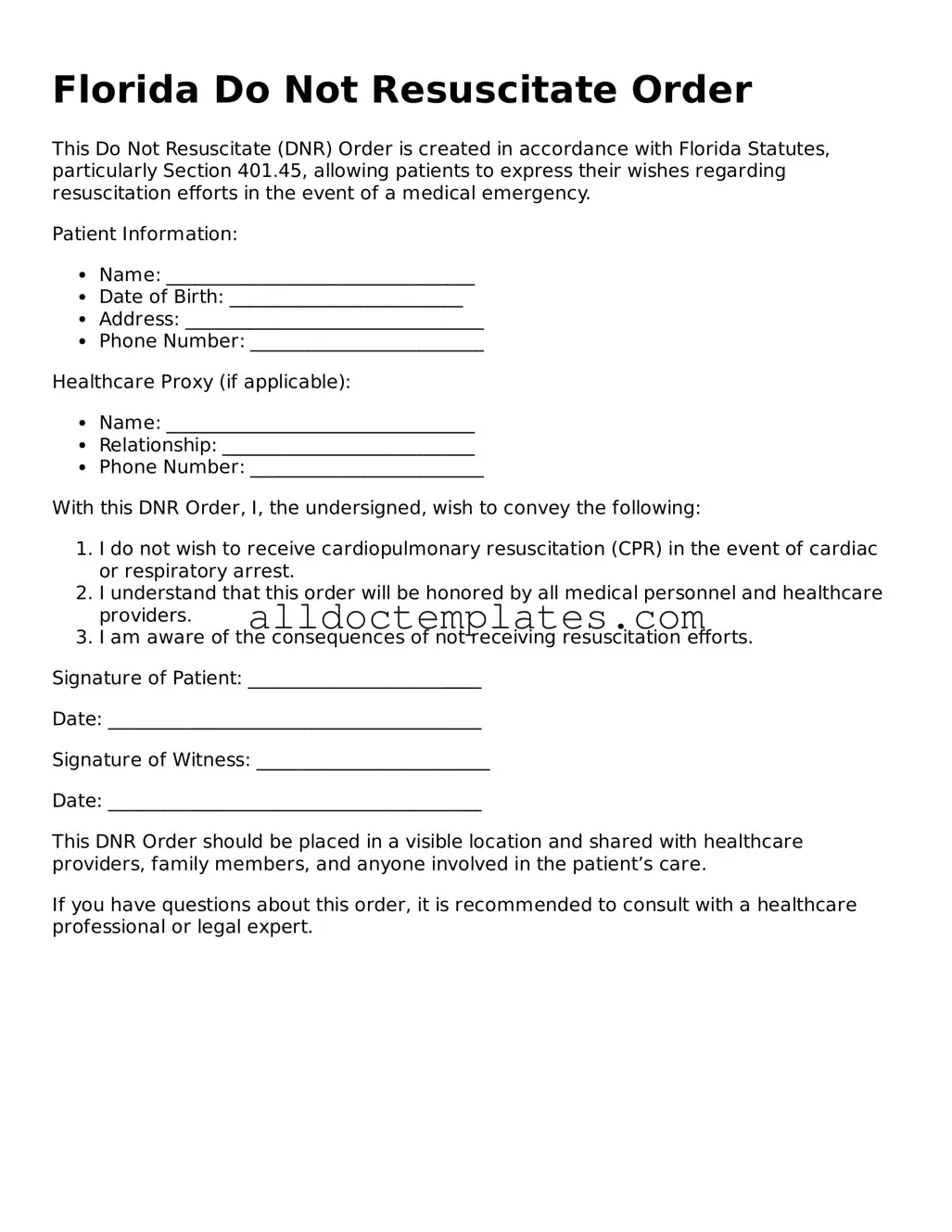Florida Do Not Resuscitate Order
This Do Not Resuscitate (DNR) Order is created in accordance with Florida Statutes, particularly Section 401.45, allowing patients to express their wishes regarding resuscitation efforts in the event of a medical emergency.
Patient Information:
- Name: _________________________________
- Date of Birth: _________________________
- Address: ________________________________
- Phone Number: _________________________
Healthcare Proxy (if applicable):
- Name: _________________________________
- Relationship: ___________________________
- Phone Number: _________________________
With this DNR Order, I, the undersigned, wish to convey the following:
- I do not wish to receive cardiopulmonary resuscitation (CPR) in the event of cardiac or respiratory arrest.
- I understand that this order will be honored by all medical personnel and healthcare providers.
- I am aware of the consequences of not receiving resuscitation efforts.
Signature of Patient: _________________________
Date: ________________________________________
Signature of Witness: _________________________
Date: ________________________________________
This DNR Order should be placed in a visible location and shared with healthcare providers, family members, and anyone involved in the patient’s care.
If you have questions about this order, it is recommended to consult with a healthcare professional or legal expert.
